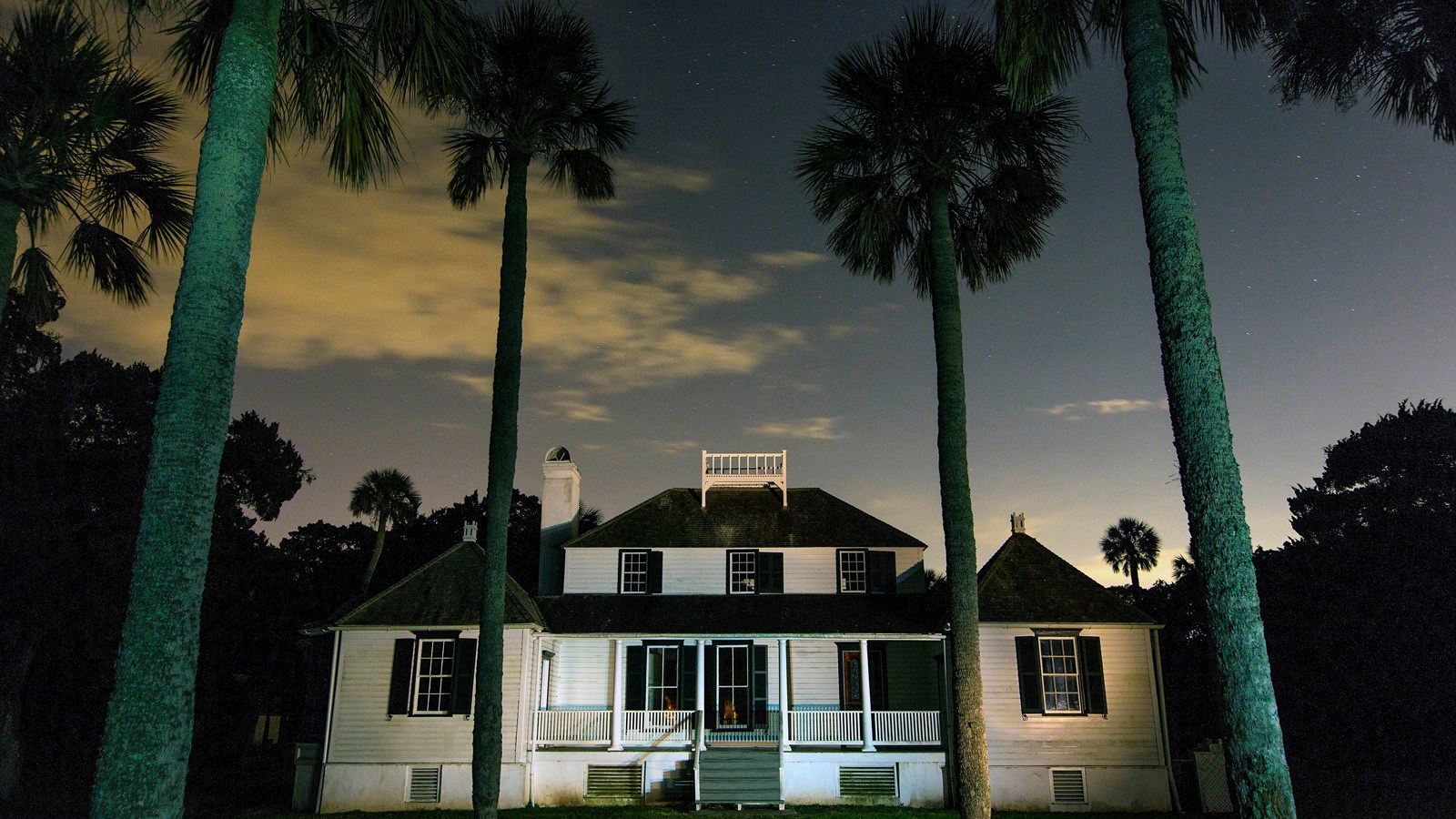Last updated: April 5, 2024
Place
Kingsley Plantation

Rasmussen- Artist in Residence
Restroom - Accessible, Assistive Listening Systems, Assistive Listening Systems T-Coil Compatible, Audio Description, Wheelchair Accessible, Automated External Defibrillator (AED), Baby Changing Station, Beach/Water Access, Benches/Seating, Cellular Signal, Dock/Pier, Fire Extinguisher, First Aid Kit Available, First Aid/Medical Care Available, Gifts/Souvenirs/Books, Historical/Interpretive Information/Exhibits, Information, Information Kiosk/Bulletin Board, Information - Ranger/Staff Member Present, Information - Maps Available, Parking - Auto, Parking - Bus/RV, Passport Stamp, Picnic Table, Restroom, Scenic View/Photo Spot, Trash/Litter Receptacles, Toilet - Flush
During the eighteenth and nineteenth centuries, many people came to Florida. Some, like Zephaniah Kingsley, sought to make their fortunes by obtaining land and establishing plantations. Others were forced to come to Florida to work on those plantations, their labor providing wealth to the people who owned them. Some of the enslaved would later become free landowners, struggling to keep their footing in a dangerous time of shifting alliances and politics. All of these people played a part in the history of Kingsley Plantation.
The Planters Home in the midst of Kingsley Plantation was once the home of Zephaniah Kingsley, a wealthy slave trader and merchant. He purchased the property in 1817 in what was then Spanish Florida. Kingsley owned several plantations around the lower St. Johns River. Two of them may have been managed part-time by his wife, a former slave named Anna Madgigine Jai. Kingsley married Anna in 1806 when she was 13 years old, after she arrived in Cuba from West Africa. He freed her in 1811 and charged her with running his Laurel Grove plantation at Doctors Lake in modern-day Orange Park.
Marriages between white plantation owners and African women were common in East Florida at that time. The Spanish government provided for a separate class of free people of color, and encouraged enslaved people to purchase their freedom. Slavery under Spain in Florida was not considered a lifelong condition, and free blacks were involved in the economic development of the region, some of them owning their own enslaved people.
After the United States acquired Florida in 1821, the Florida Territorial Council passed laws forbidding interracial marriage and the right of free blacks or mixed race descendants to inherit property. To avoid difficulties with the new government in what he termed its "spirit of intolerant prejudice," Kingsley sent his wives, children, and a few formerly enslaved people to Haiti, by that time a free black republic. His two daughters had already each married white planters and remained in Florida. He sold the plantation to his nephew, Kingsley Beatty Gibbs in 1839, and transferred some of the enslaved people to his plantation in San Jose.
Kingsley then established a new farm in Haiti that was worked by former Fort George Island slaves, who had become indentured servants. Slavery was illegal in Haiti. They were to earn their freedom in nine years.
The Kingsley family's experience in 19th century Florida underscores the arbitrary nature of slavery. While American slaveholders believed that color should be the basis of condition, and that that condition was fixed and eternal, men like Kingsley believed otherwise. As Kingsley himself put it, "Few, I think will deny that color and condition, if properly considered, are two very separate qualities ... our [American] legislators ... have mistaken the shadow for the substance, and confounded together two very different things; thereby substantiating by law a dangerous and inconvenient antipathy, which can have no better foundation than prejudice."
